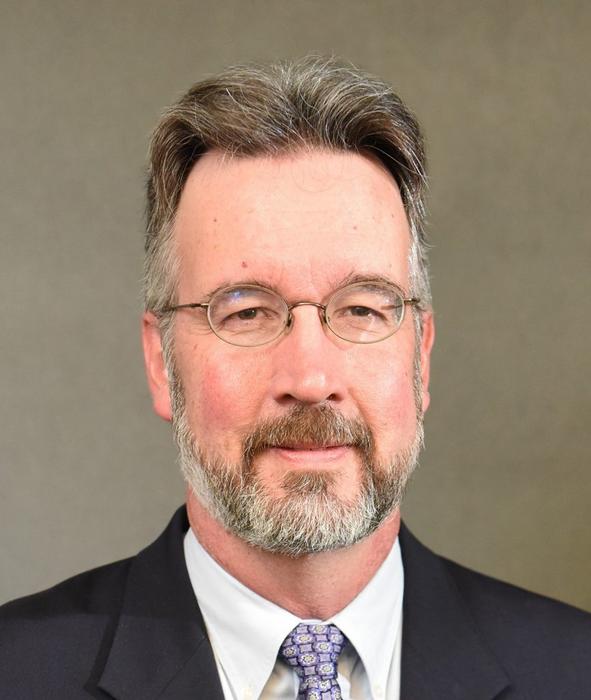The Infrastructure Investment and Jobs Act was enacted in 2021 to inject $1.25 trillion into the country’s aging infrastructure to help cities protect and prepare themselves from future occurrences of extreme weather effects which, in 2023, caused almost $10 billion in damages.

Credit: Courtesy of Virginia Tech
The Infrastructure Investment and Jobs Act was enacted in 2021 to inject $1.25 trillion into the country’s aging infrastructure to help cities protect and prepare themselves from future occurrences of extreme weather effects which, in 2023, caused almost $10 billion in damages.
However, this financial aid poses new challenges for urban planners: How to distribute these resources effectively while ensuring fairness across all communities and how to improve infrastructure while considering increased risks associated with sea level rise.
Chris Zobel, the R.B. Pamplin Professor of Business Information Technology in the Pamplin College of Business, worked with colleagues from Florida Atlantic University and the University of Houston to develop a mathematical model to help solve such problems. Their research, published in an upcoming special issue of the journal Production and Operations Management that focuses on diversity and inclusion in operations management, offers a comprehensive approach to decision-making amidst the challenges posed by extreme weather events, particularly the escalating risks of flooding in coastal cities from sea level rise.
“Even with this necessary additional funding, cities typically are not going to be able to improve every part of their infrastructure as much as they would like to, particularly because they need to protect against current and future storms,” said Zobel. “They are also very aware of the importance of incorporating equity into deciding which improvement projects to choose so that they can provide more socially vulnerable groups their fair share of protection.”
According to the Federal Emergency Management Agency, social vulnerability is the susceptibility of different social groups to the adverse impacts of natural hazards, including disproportionate death, injury, loss, or disruption of livelihood. Factors determining social vulnerability include poverty, unemployment, age, racial and ethnic minority status, physical abilities, housing type, and vehicle access.
Using the City of Miami’s stormwater infrastructure as a case study, Zobel and his team evaluated various scenarios to optimize resource allocation across 72 areas within the city, considering factors such as social vulnerabilities and projected sea level rise impacts. Their approach enables decision-makers to make informed choices about where and how much to invest in infrastructure upgrades, balancing technical effectiveness with parity.
Central to the methodology is the integration of social vulnerability indices, such as those developed by the Centers for Disease Control and Prevention, into their optimization models. By factoring in demographic and socio-economic data, the models prioritize investments that not only enhance infrastructure resilience but also mitigate the socio-economic disparities exacerbated by flooding events.
“It’s important to think about who is impacted by the flooding,” Zobel said. “Then, the money can be allocated in such a way that it’s not just going to be effective, it’s also going help the people who need it the most.”
Zobel’s model equips decision-makers to prepare for long-term infrastructure needs amidst deep uncertainty by incorporating scenarios that consider varying degrees of sea level rise.
“When you’re looking at a place like the City of Miami and you start talking about sea level rise, the situation is almost certainly going to be very different 30 years from now – but we don’t know how different,” he said. “The model allows decision-makers to compare how well their investments might work under different scenarios to help them select infrastructure improvement projects that are more likely to be effective under a wide variety of potential conditions in the future.”
Beyond stormwater management, Zobel emphasizes the broader application of the approach to other critical infrastructure sectors. Whether in energy, transportation, or public health, the framework offers a versatile tool for optimizing resource allocation while addressing societal vulnerabilities.
“Our research isn’t trying to say, ‘You need to build better infrastructure in these particular neighborhoods and these neighborhoods alone,’” Zobel said. “Instead, it provides decision-makers with the ability to look at the trade-offs between equity and efficiency so that they can see what the implications are of making different types of allocations. This helps them to be better informed so that they can make more effective decisions that balance these factors fairly and appropriately.
“The Pamplin College of Business is dedicated to supporting research that addresses societal needs and seeks to improve the human condition. There are lots of opportunities to pursue research that can be leveraged to improve not just traditional business operations but also the operations of public and not-for-profit organizations,” he said.
“We all have an important role to play in helping to find solutions to complex and evolving societal problems such as the impacts of sea level rise, and I’m pleased to be part of a team that was able to make even a small contribution toward this effort.”
Related story
Using data to prepare communities for disasters
Journal
Production and Operations Management
Article Title
Trade-offs Between Equity and Efficiency in Prioritizing Critical Infrastructure Investments: A Case of Stormwater Management Systems
Article Publication Date
21-Mar-2024



